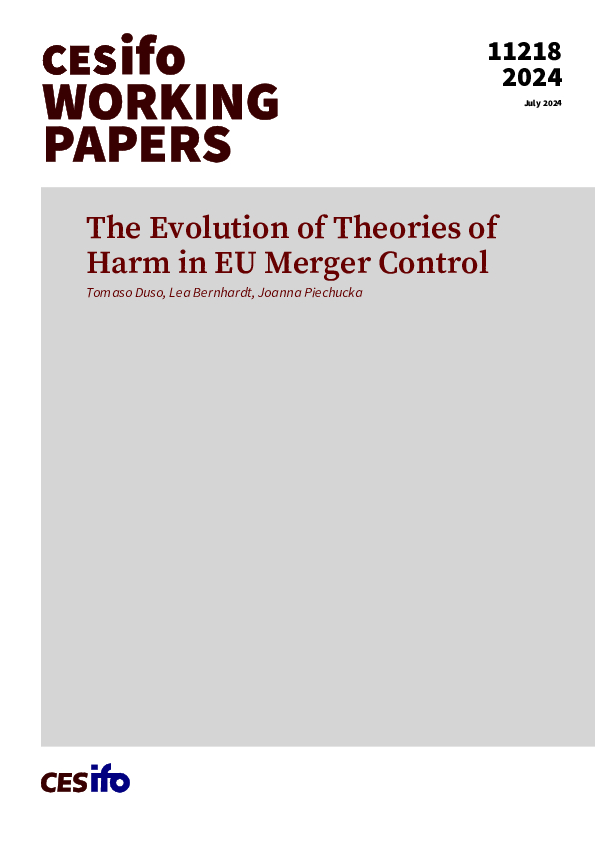The Evolution of Theories of Harm in EU Merger Control
CESifo, Munich, 2024
CESifo Working Paper No. 11218

We discuss the main Theories of Harm in EU merger control and their evolution since the 1990s. We present stylised facts and trends using data extracted from EU merger decisions by natural language processing tools. EU merger policy has adapted over time, both in terms of legislation and theories of harm, as well as in terms of the investigative tools and evidence used. The introduction of the new Merger Regulation in 2004, which led to a change in the substantive test, also brought about significant changes in the use of Theories of Harm. Unilateral theories are now used more frequently and have developed further, in particular in relation to the assessment of closeness of competition. Non-horizontal conglomerate and vertical Theories of Harm focusing on foreclosure issues are now much more common and are a standard tool in most in-depth investigations. More novel Theories of Harm related to innovation and digital markets have been developed and implemented since the 2010’s. While market shares remain a central tool for merger assessment, the use of internal documents has increased, accompanied by the use of quantitative tools. With respect to Commission interventions, structural remedies are used more frequently, although behavioural remedies are also increasingly deployed, especially in Phase II.
Industrial Organisation